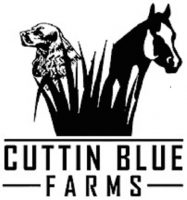 When one has decided that the Irish Setter will become the newest member of the family, the training plan must be a primary consideration. The plan will include both the house training and behavior training for the furry newcomer.
When one has decided that the Irish Setter will become the newest member of the family, the training plan must be a primary consideration. The plan will include both the house training and behavior training for the furry newcomer.
During your research about the Irish Setter, you will have learned about the exuberant personality of this dog and the need for positive attention. These factors need to be considered in the training process. There are several parts to the training of the Irish Setter which will be occurring simultaneously.
Most experts believe that a crate is the best situation for house training. It should be in a convenient place for frequent trips outside. The crate will become the dog’s “safe place.” You can take the puppy out to play as long as he/she is never out of your sight or “accidents will happen.” When you do take your dog outside, ensure that he/she knows where the toilet spots are located in the yard. If you do your part, the Irish Setter will become house trained.
There are a number of theories regarding the best way to behavior train the Irish Setter. All of them have pros and cons. Therefore, a new owner has more decisions to make about which method to choose. As you research, keep in mind that you must be the “alpha” in the relationship with your dog. In addition, you want to make sure that the Irish Setter will respond to commands from other family members. This will take time and patience on the part of the whole family. You might choose obedience class for puppies and again for the adult dog or you might choose to train your Irish Setter on your own.
There are some basic commands that all Irish Setters must learn which are: sit, stay, down, come and no. Any training should be designed to be short, and keep the dog’s interest or you might get some unacceptable behavior. You have to ensure that your Irish Setter is socialized, will lt you take food away, does not chew things except toys, comes when called. If this doesn’t happen, it is an owner’s fault, not the fault of the dog. Therefore, during training, there should be consequences for inappropriate behavior. This absolutely does not mean hitting or any kind of physical abuse. It does mean verbal admonishment, leash pulling and other owner, /trainer behaviors that teach your dog which behaviors are not allowed.
One wants the Irish Setter to want to avoid the consequences and respond to the positive responses of the owner. Some trainers advocate combining verbal commands with a simple gesture and some dogs will learn to respond to the gesture alone. Choices for training include the use of food rewards, use of a clicker, and the use of verbal rewards. Owners of Irish Setters will have to decide how they want to reward during the training so please think carefully.





